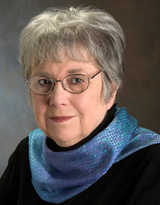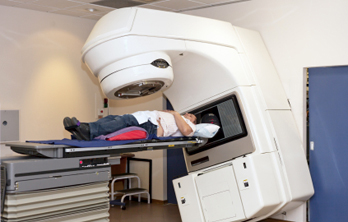Sara Rockwell is a leader in her field. A professor of therapeutic radiology and pharmacology at the School of Medicine, Rockwell was among the first researchers to study the effects of oxygen deficiency on the response of malignant cells to radiation and anticancer drugs, and was among the first to consider the implications of this deficiency in microscopic tumors for the development of solid malignancies.
Rockwell, who is also associate dean for scientific affairs, joined the faculty of Yale School of Medicine in 1974, and teaches radiation biology, pharmacology, cancer biology, ethics and career development skills. She earned her bachelor’s degree in physics from Penn State University in 1965. She went on to earn her doctorate degree in biophysics from Stanford University in 1971.
Recently, Penn State University gave her its highest honor, selecting her as one of seven Distinguished Alumni for 2011. The Yale Daily Bulletin recently spoke with Rockwell about her work — past, present and future — and what the future holds for cancer treatment.
Has there been an over-arching goal in your research?
The broad goal of my research has been to perform laboratory studies that improve our understanding of the biology of solid tumors and provide insights that can be used to improve the treatment of cancer by radiation therapy and by regimens combining radiation with drugs. Many of our projects have studied the microenvironments within solid cancers and explored their effects on the biology of tumor cells and on their responses to radiation and chemotherapy.
In your study of the microenvironments of cells in solid tumors, did you find things that surprised you?
Yes we did. That’s the fun of science — finding new things that you just don’t expect. For example, I started studying hypoxia (oxygen deficiency in tissues) in the 1960s because we knew that severe, acute hypoxia induced radiation resistance. Our work and the work of many other groups showed that large solid tumors in mice contained many hypoxic cells that were resistant to radiation and drugs and caused tumors to recur after treatment. For several years, our research focused on finding new approaches to killing these therapeutically-resistant cells and thereby improving cancer therapy.
Recently, work on hypoxia has taken on completely new dimensions, because we now know that these microenvironments actually develop in precancerous areas while they are still microscopic and that they induce a wide variety of changes in metabolic processes, signaling pathways and epigenetic factors that are involved in producing the invasive and metastatic phenotypes characteristic of cancer. Every day, research being done by investigators around the world is identifying new hypoxia-induced molecules or pathways that can be used to target new anticancer agents and suggesting new ways to detect and remove tiny clusters of precancerous disease even before they become dangerous malignancies.
Moreover, many of the hypoxia-induced pathways we see in cancers are also involved in the development of the tissue injuries seen after stroke and heart attacks, as well as in diabetes and in many other common diseases. The things we have learned from studies with tumors turn out to have a much broader impact than we ever imagined.
Describe for us how cancer treatment has changed in the past few decades.
Cancer therapy has become much more targeted, much more personalized, much more complex, and much, much more effective. In my lifetime, I’ve seen incredible changes in cancer treatment. I can remember when cancer was always a “deadly disease”; now the majority of cancer patients are treated successfully and cured, and cancer death rates are falling.
Linear accelerators, now used for radiotherapy throughout the U>S>, were first used to treat patients at Stanford in 1956, and were still an exciting innovation when I began my graduate work there. The physics, engineering and computer technology that underlie radiotherapy have evolved with amazing speed, and the skills and technologies available today allow radiation to be targeted to tumors with a precision undreamed of a few decades ago. This targeting is guided by using powerful new imaging technologies — CT, MRI, PET — to localize and characterize the tumors. Moreover, radiation oncologists, surgical oncologists and medical oncologists now work together as teams to plan the best treatment for each individual patient, combining their approaches carefully, for maximum benefit.
How has the drive toward genetically-based cancer treatment, also known as personalized medicine, affected your research?
Only indirectly. Remember, I’m not a physician, and I don’t treat patients. My job is to do lab studies that lead to new insights and new tools that my clinical colleagues can translate into clinical applications, and use to treat their patients more effectively.
Radiation therapy has always been a very individualized treatment modality. Successful radiotherapy requires that radiation be delivered to the tumor at doses that eliminate the cancer, but this must be done with as little injury as possible to the patient’s healthy tissues. This means the radiation oncologist must understand each individual patient and his/her cancer and must work with our physicists to plan every treatment for each patient with great precision and thought.
Researchers in our radiobiology labs at Yale work to improve this process. We study how the genotypes and physiological characteristics of different tumors and different patients affect their responses to radiation, providing a scientific basis for identifying those patients who could benefit from, for example, a higher or lower dose of radiation, a different way of delivering radiation, or combining radiation with a new or existing drug. Research in our labs also tests new technologies for delivering radiation and better methods for imaging tumors and for using imaging results to guide treatment. As new, targeted drugs move toward the clinic, we study how the effects of these drugs interact with the effects of radiation, because most patients who will be treated with these drugs will also receive radiotherapy, and the drugs and radiation must be combined in ways that maximize benefit and minimize risk of injury.
Where do you think the treatment of cancer will go in the next few years?
I think the treatment of cancer patients will continue to become more individualized, more precisely targeted and more interdisciplinary. It will also continue to become more effective. As more cancer patients are cured, and go on to live long, cancer-free lives, there will also be increasing emphasis on ensuring that patients recover successfully from the effects of their cancers and their treatment. You can already see this trend, both in new research efforts that examine ways to prevent and treat the side effects of cancer and of cancer therapy, and in the new “survivorship clinics” of the Yale Cancer Center, which help patients get through their therapy, recover and go forward with their lives.
What are your hopes for cancer researchers just beginning their careers?
I hope that they will find their research to be as exciting and enjoyable as I have found mine to be and that they will discover better ways to treat cancer and to prevent precancerous diseases from developing into cancer.
— By Helen Dodson
*Source: Yale University


